





















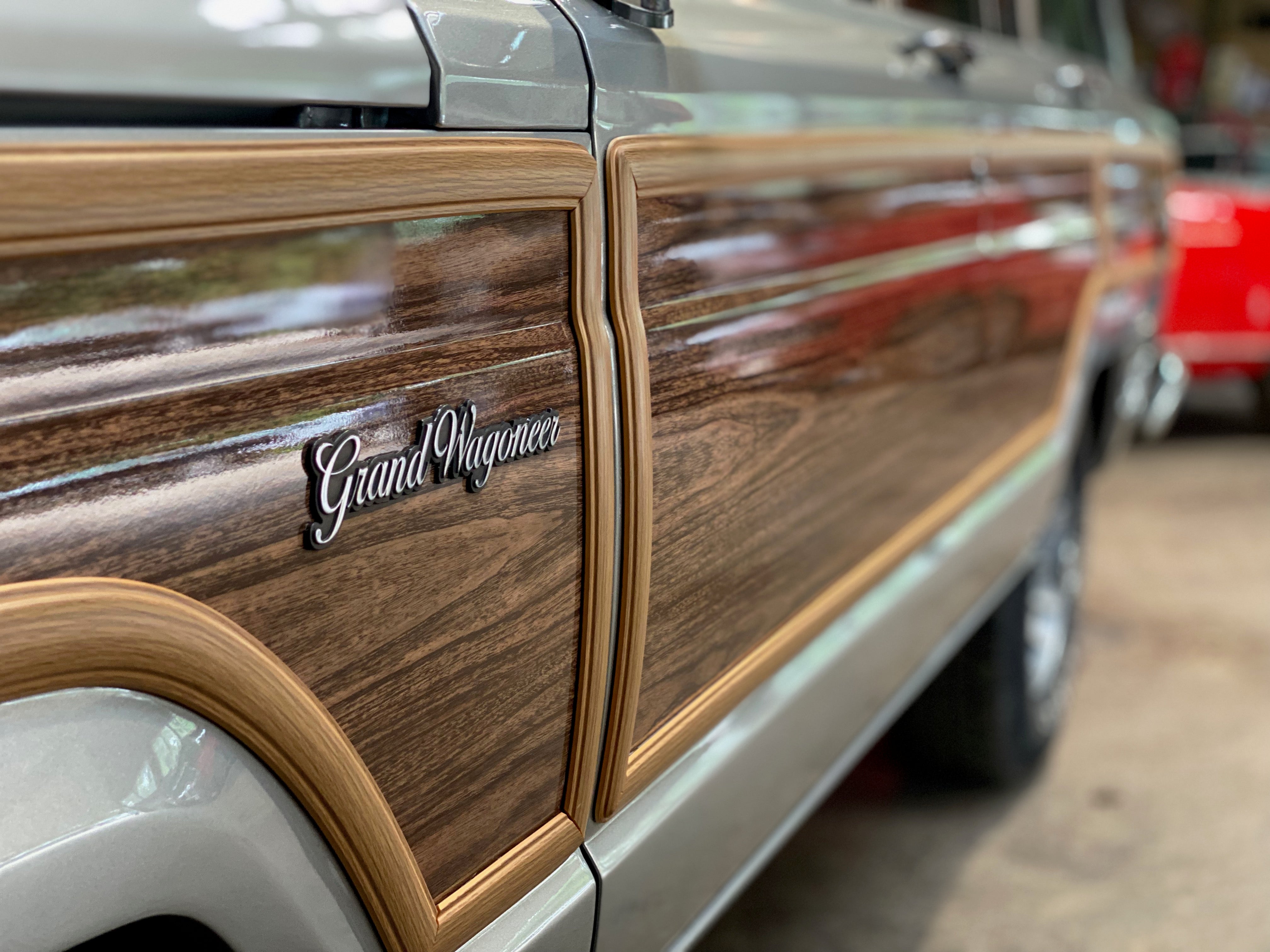


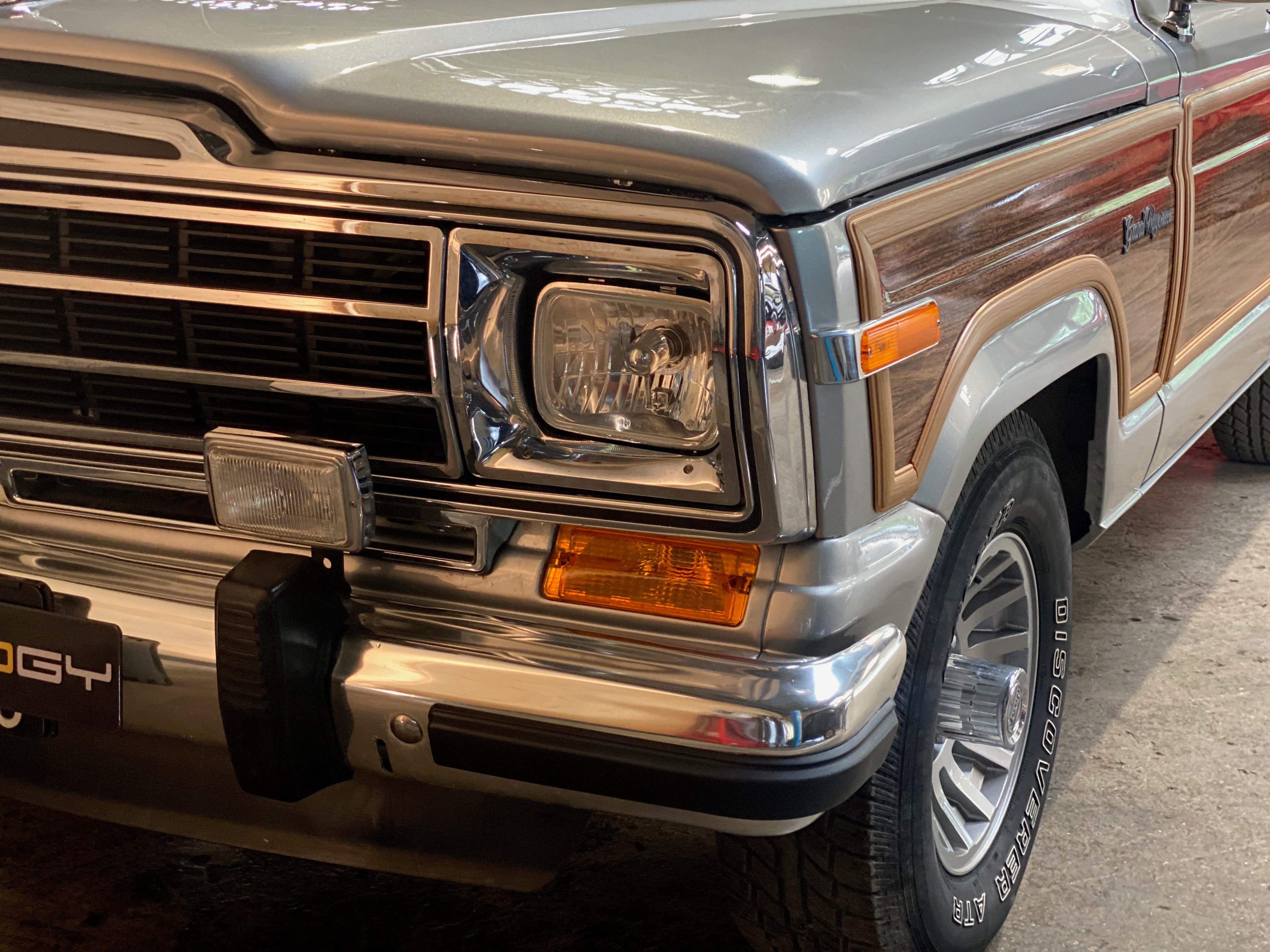








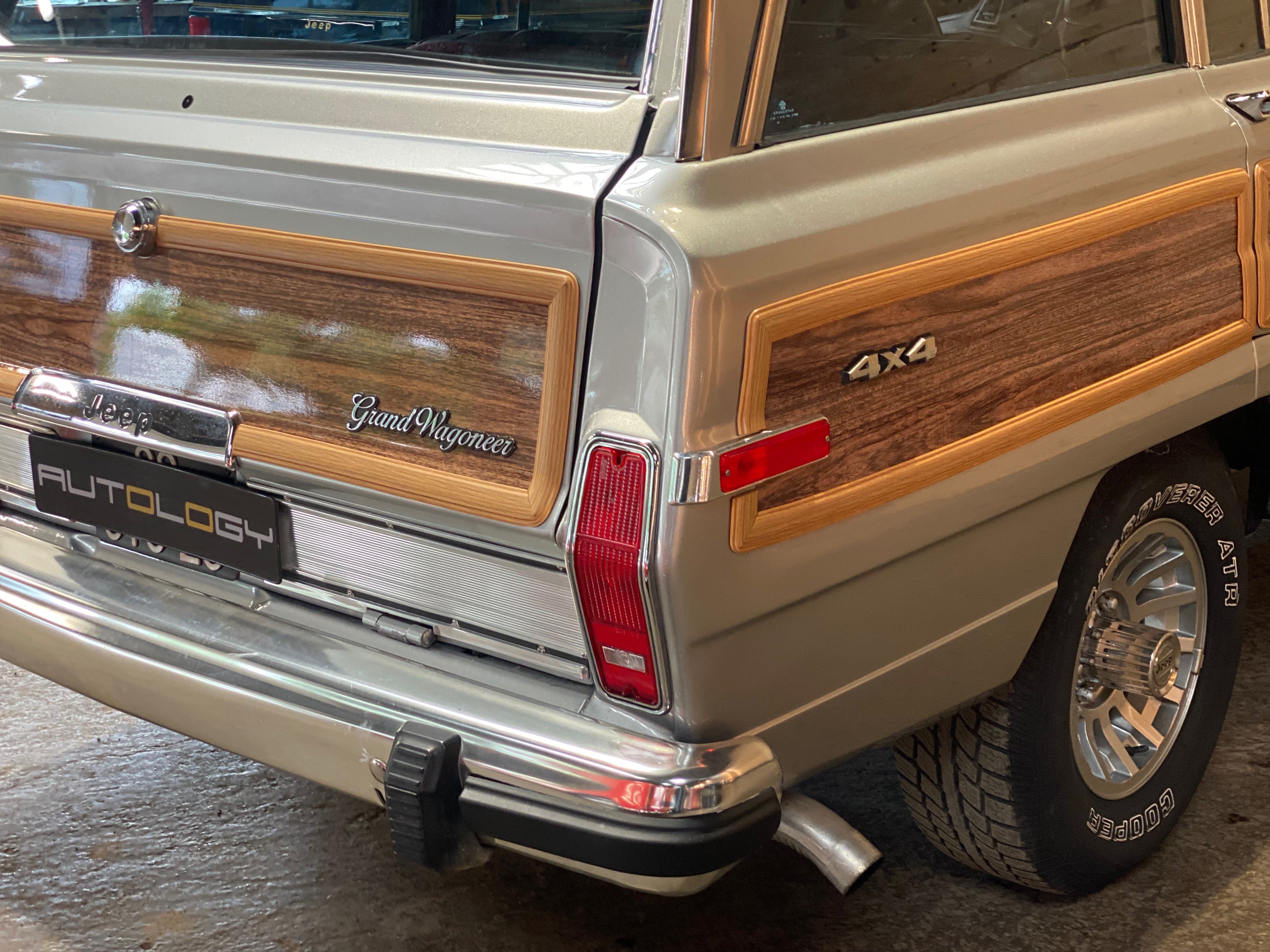

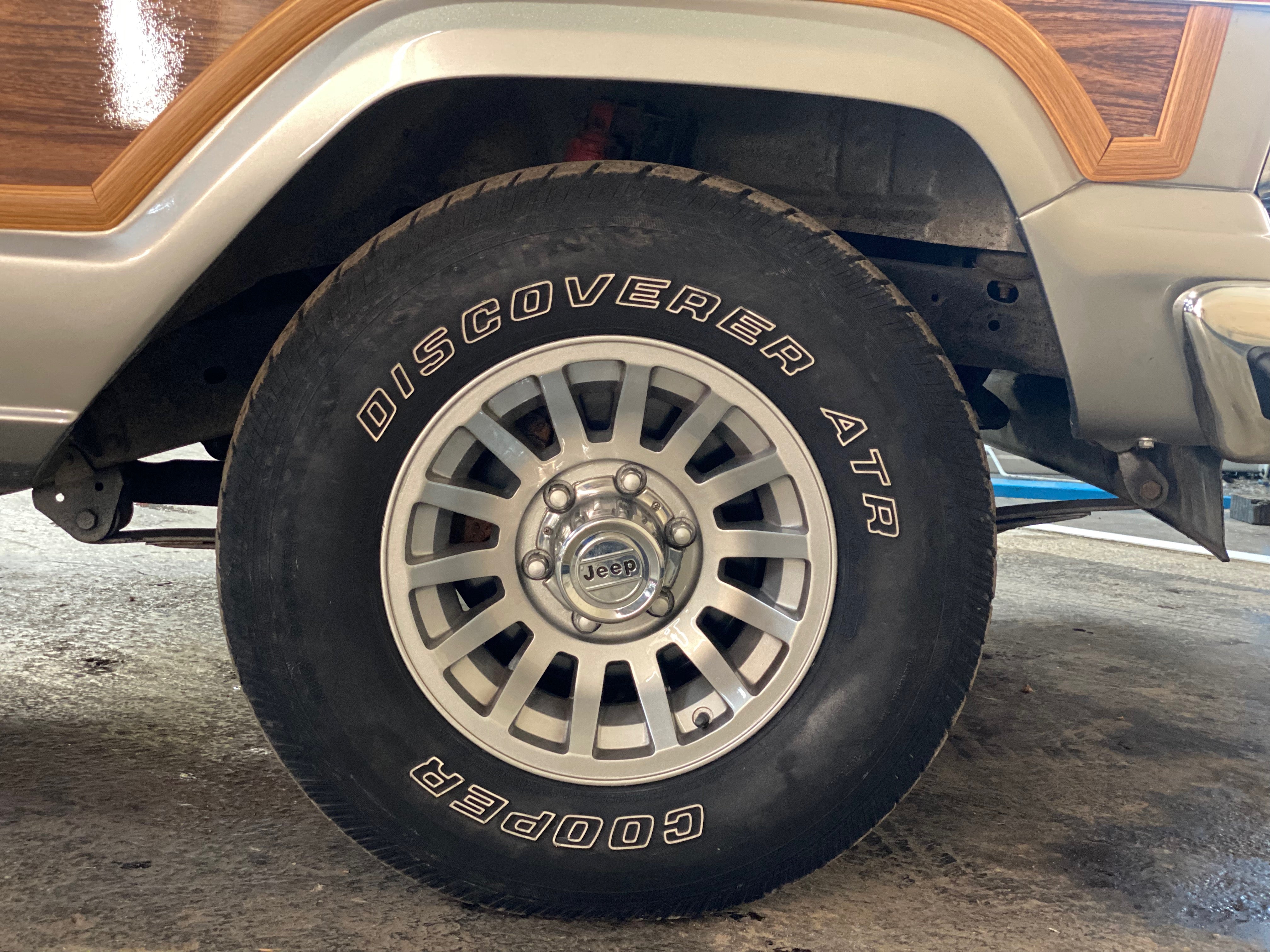


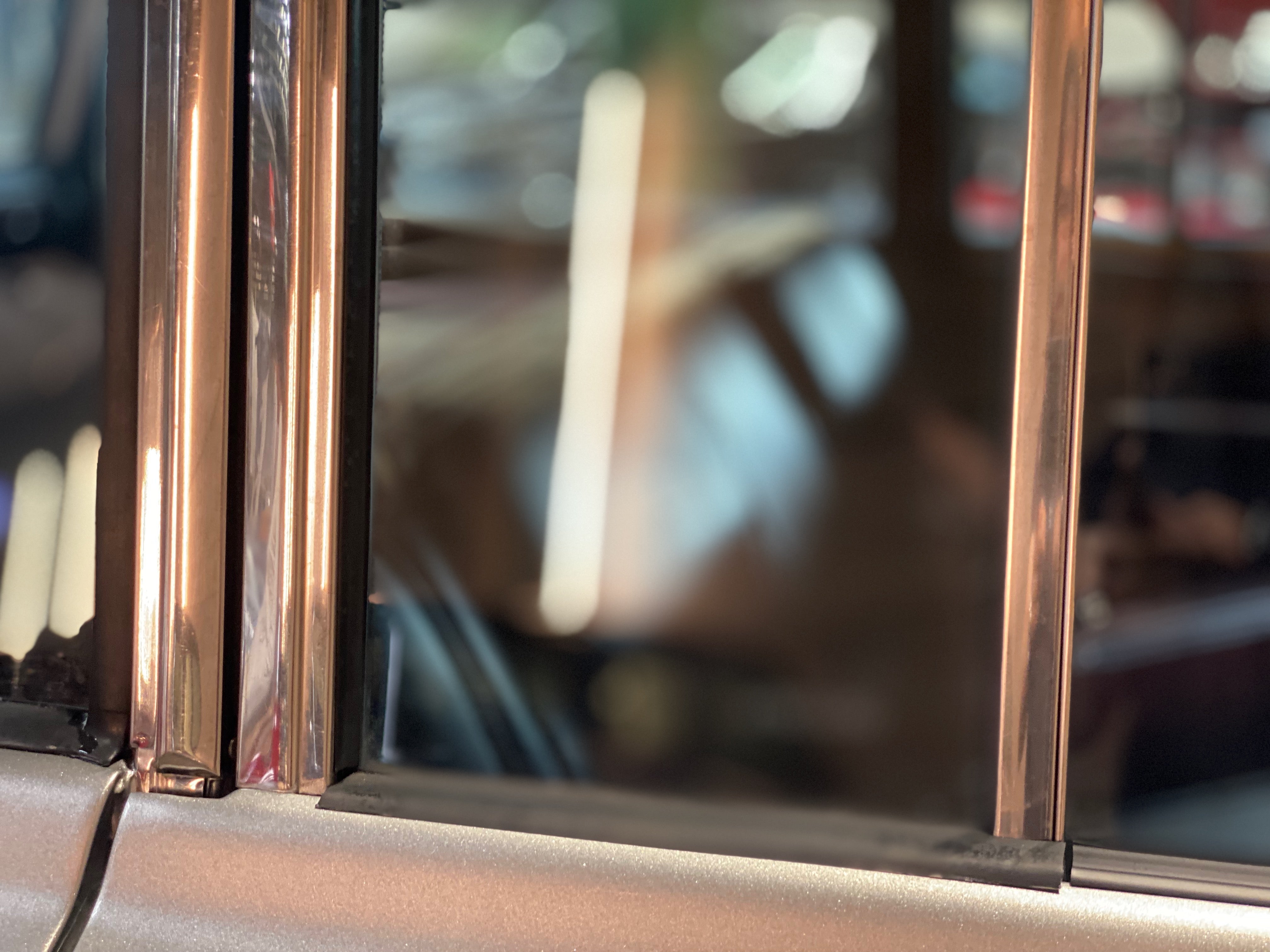




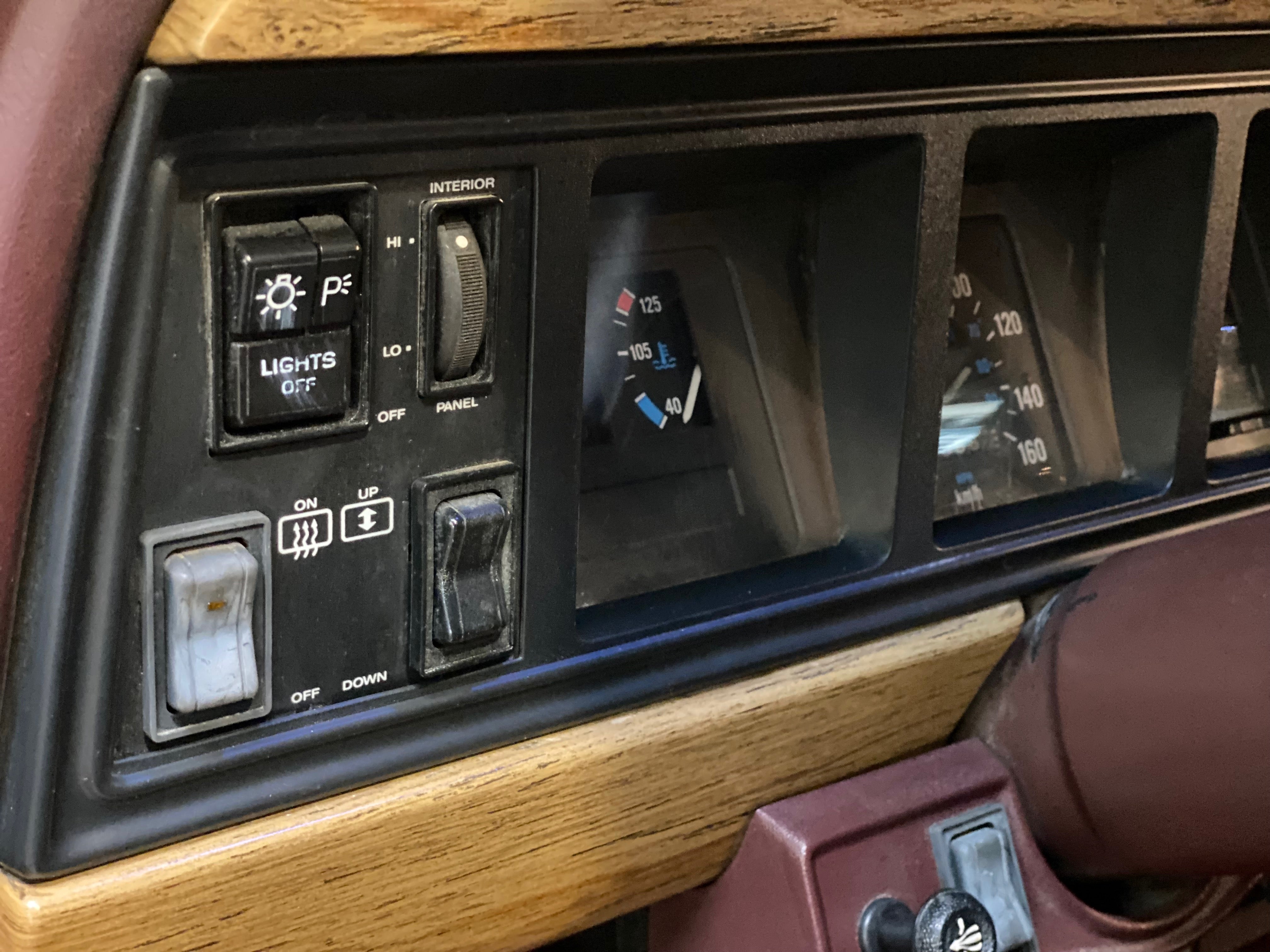
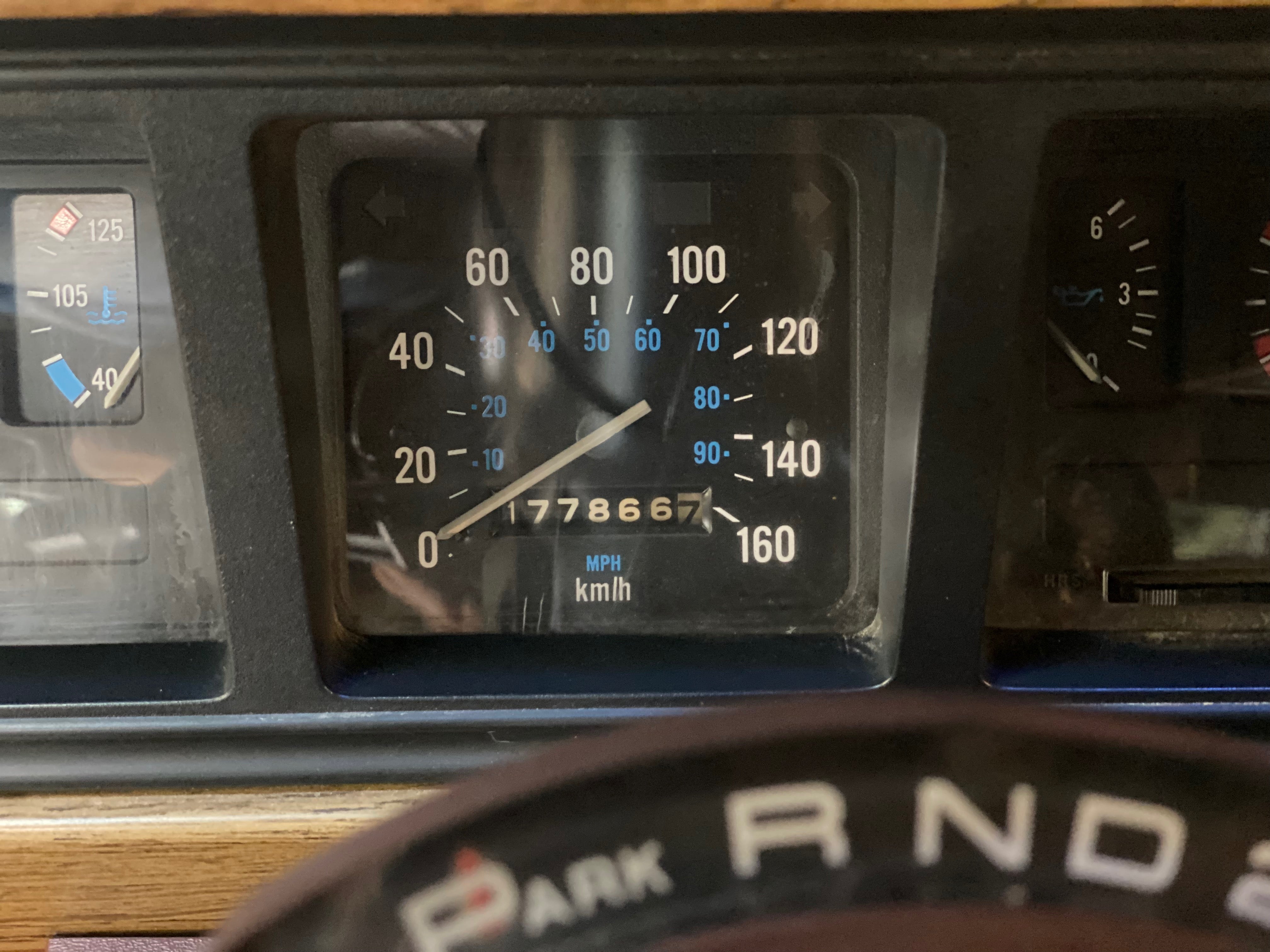






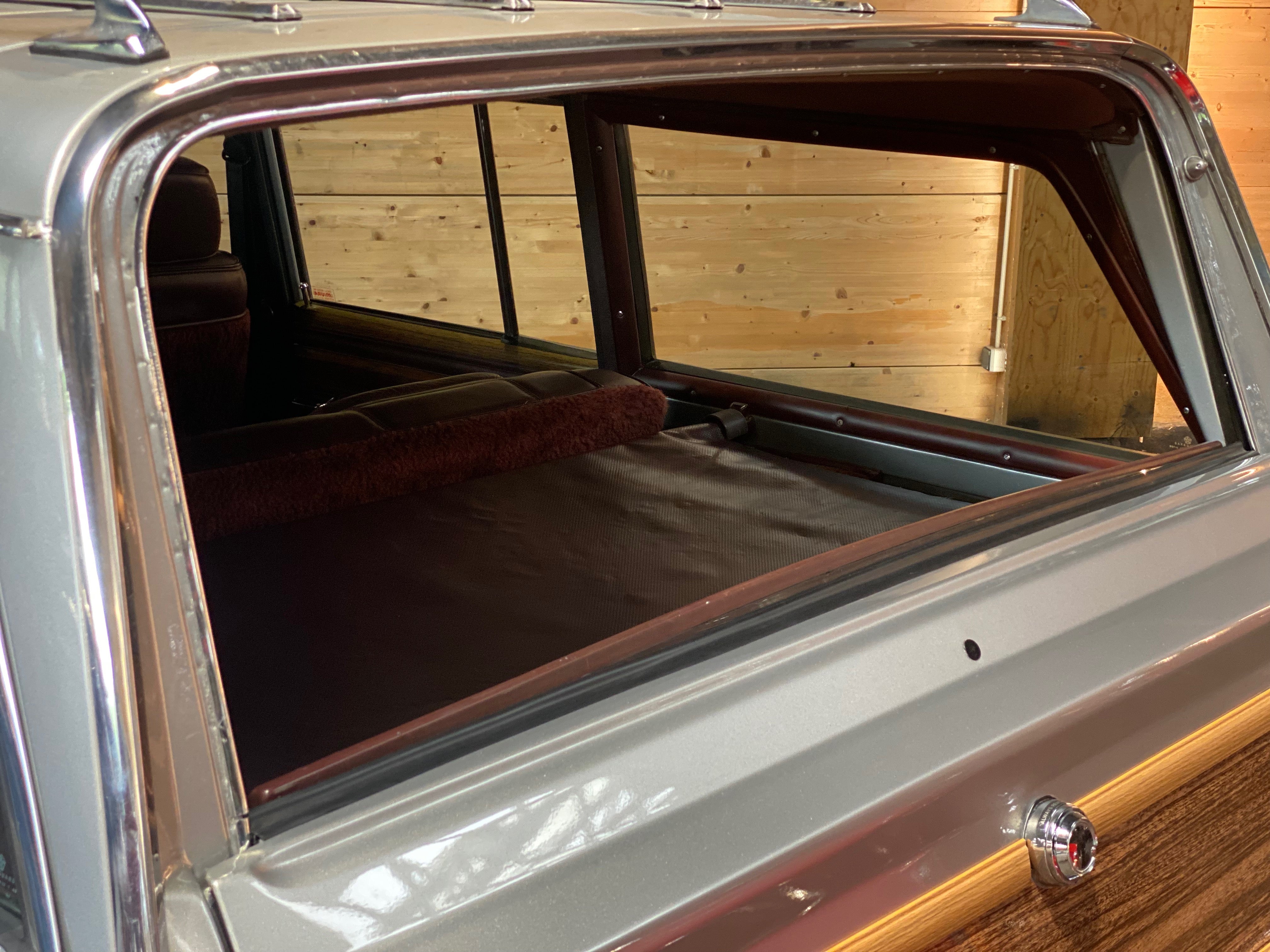


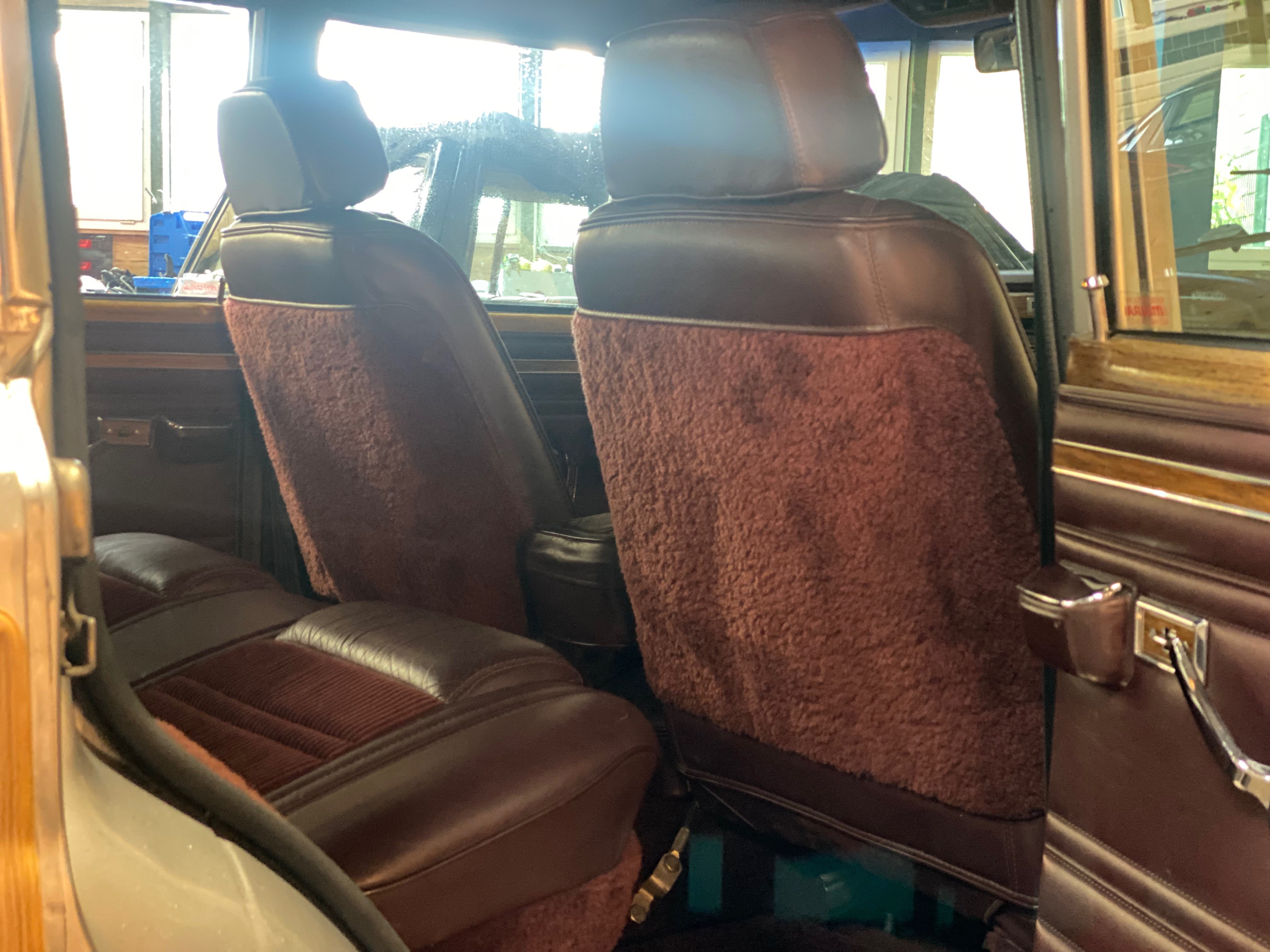








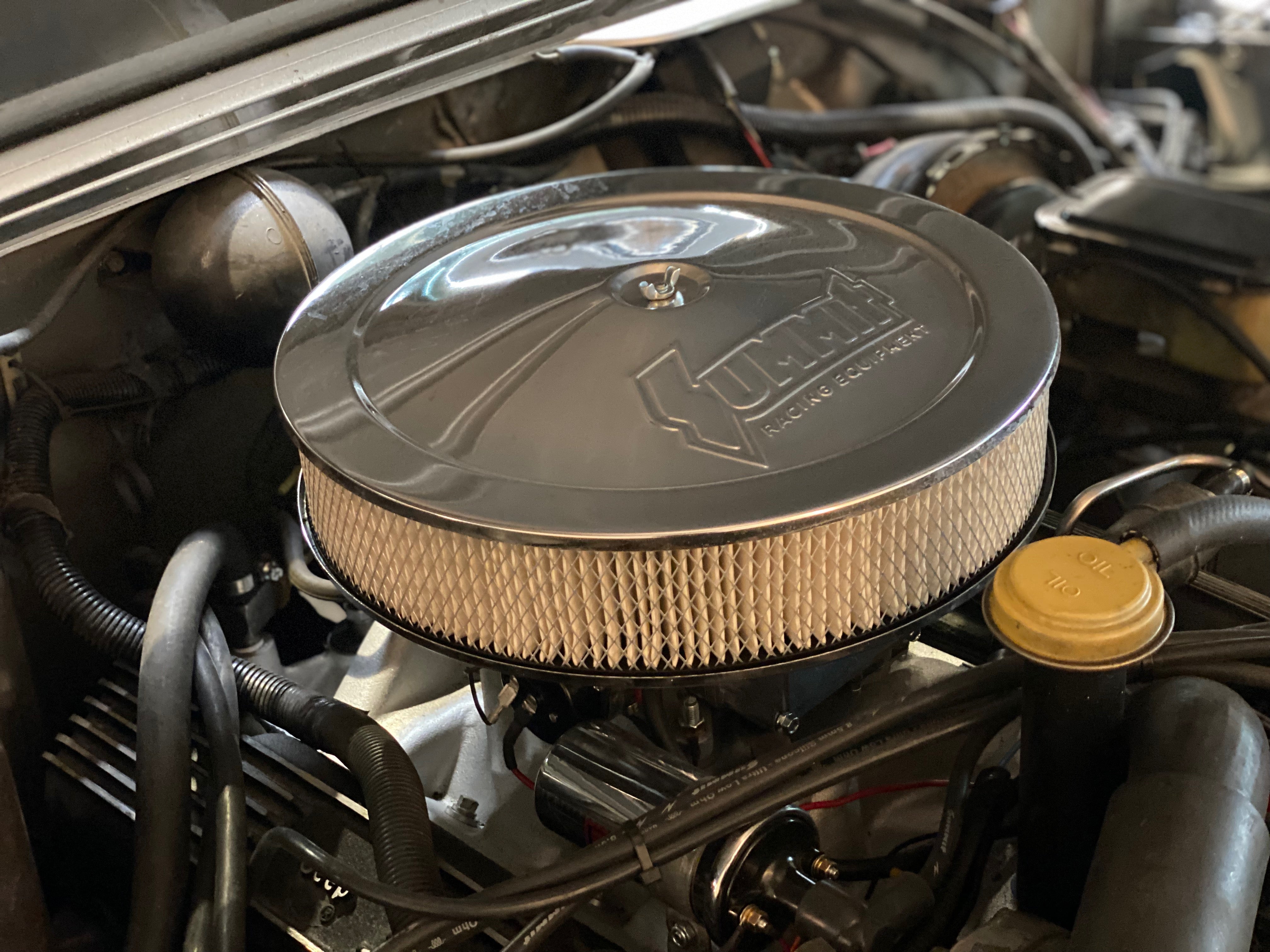




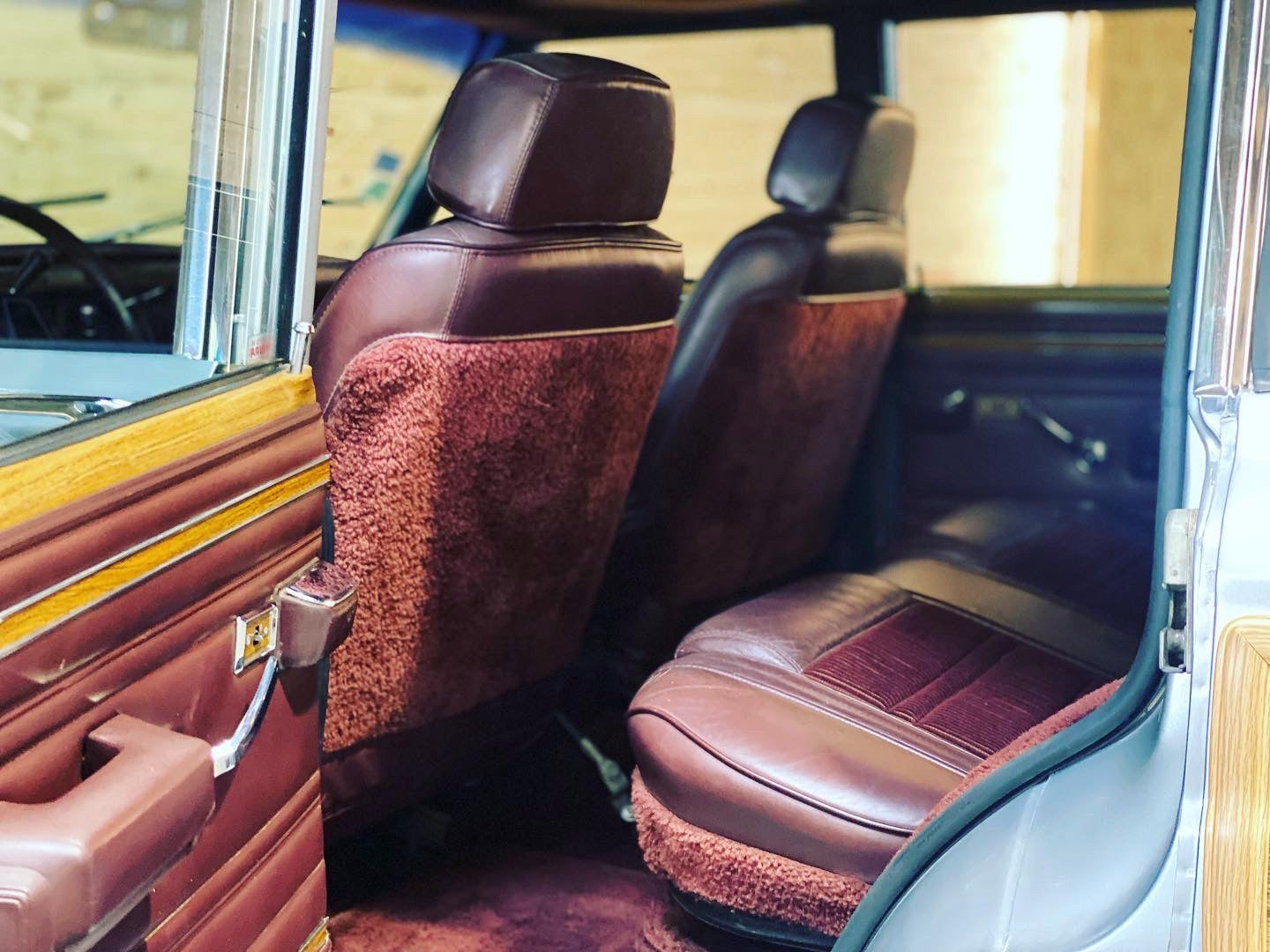




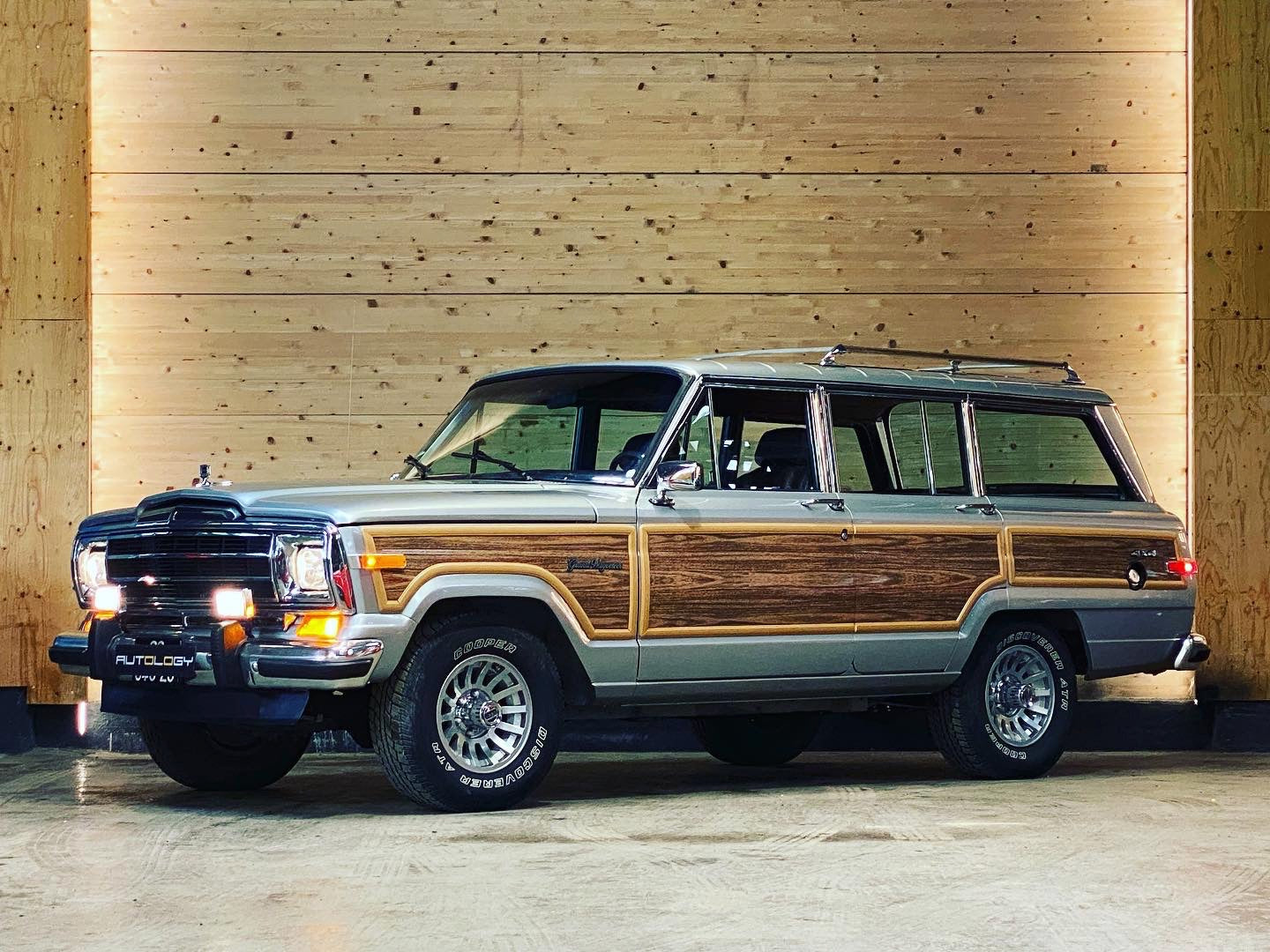
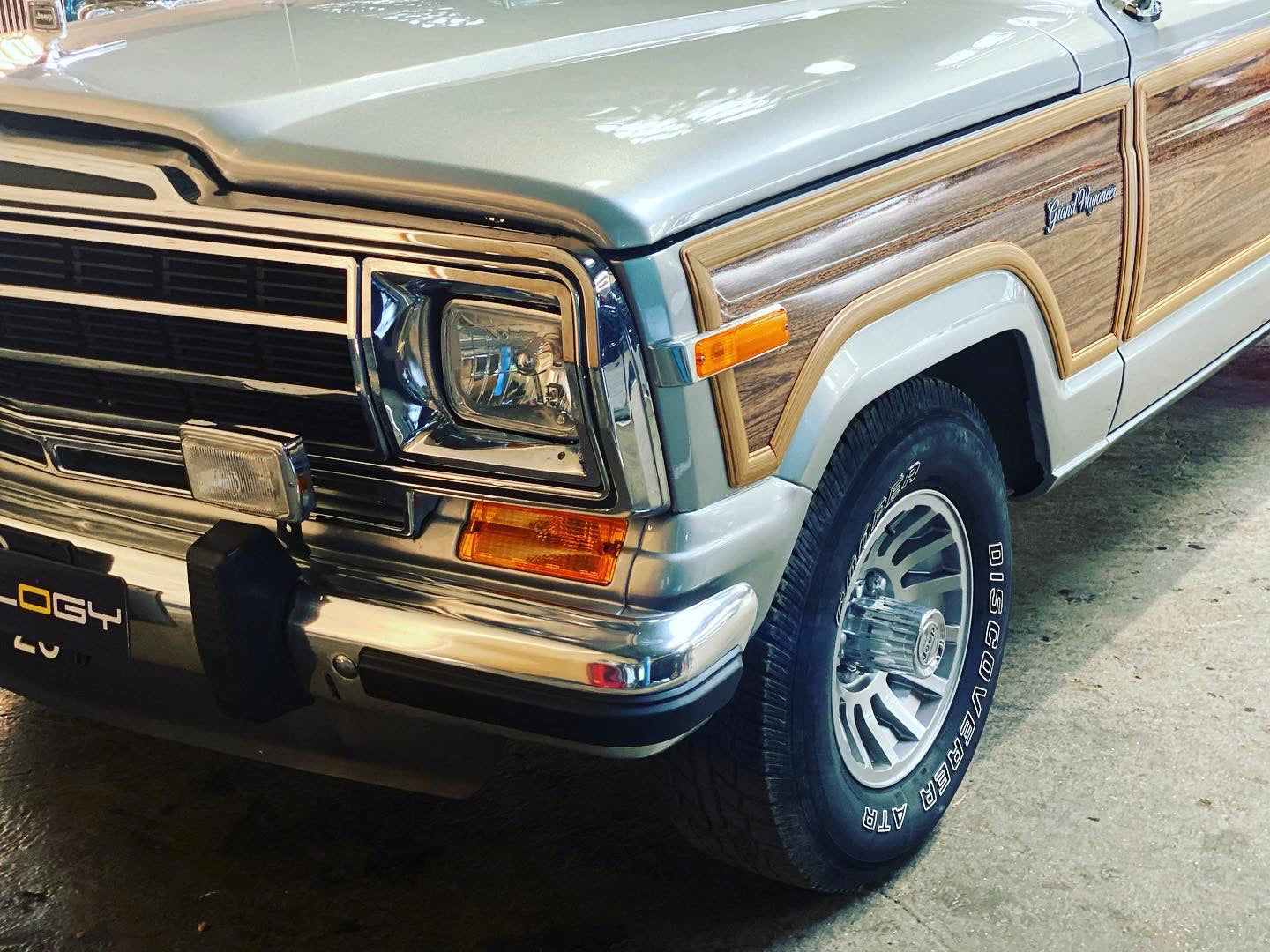





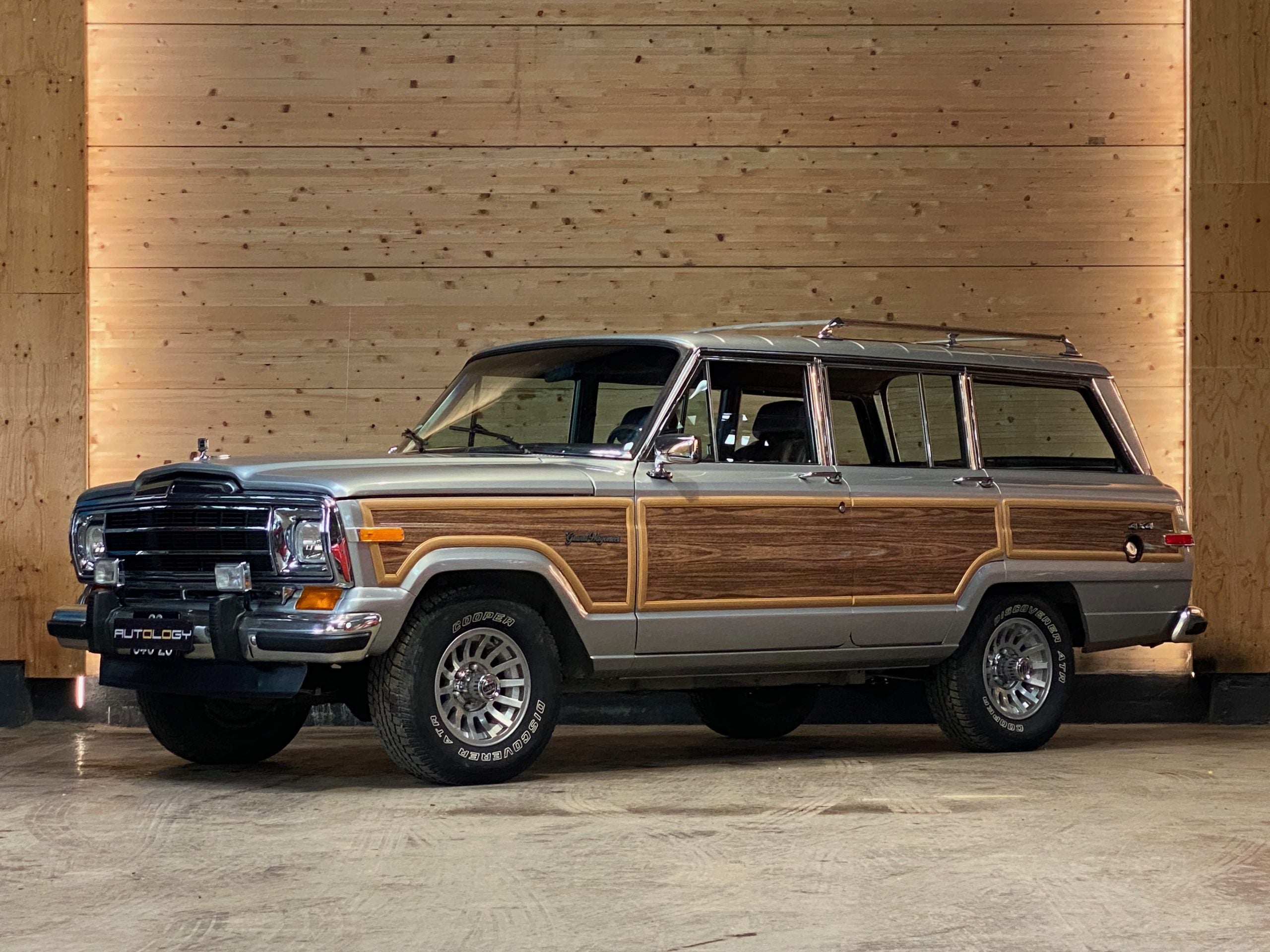

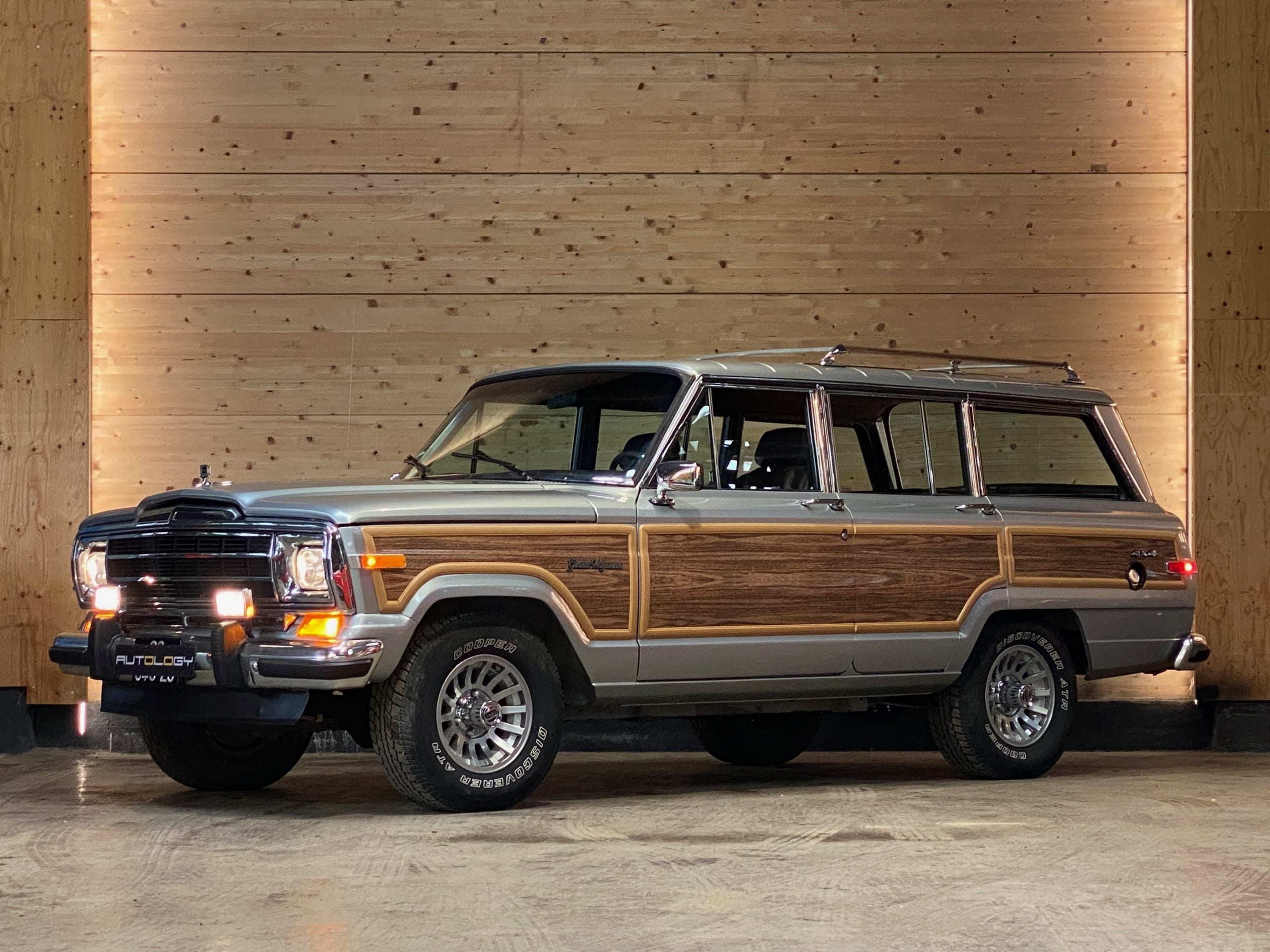





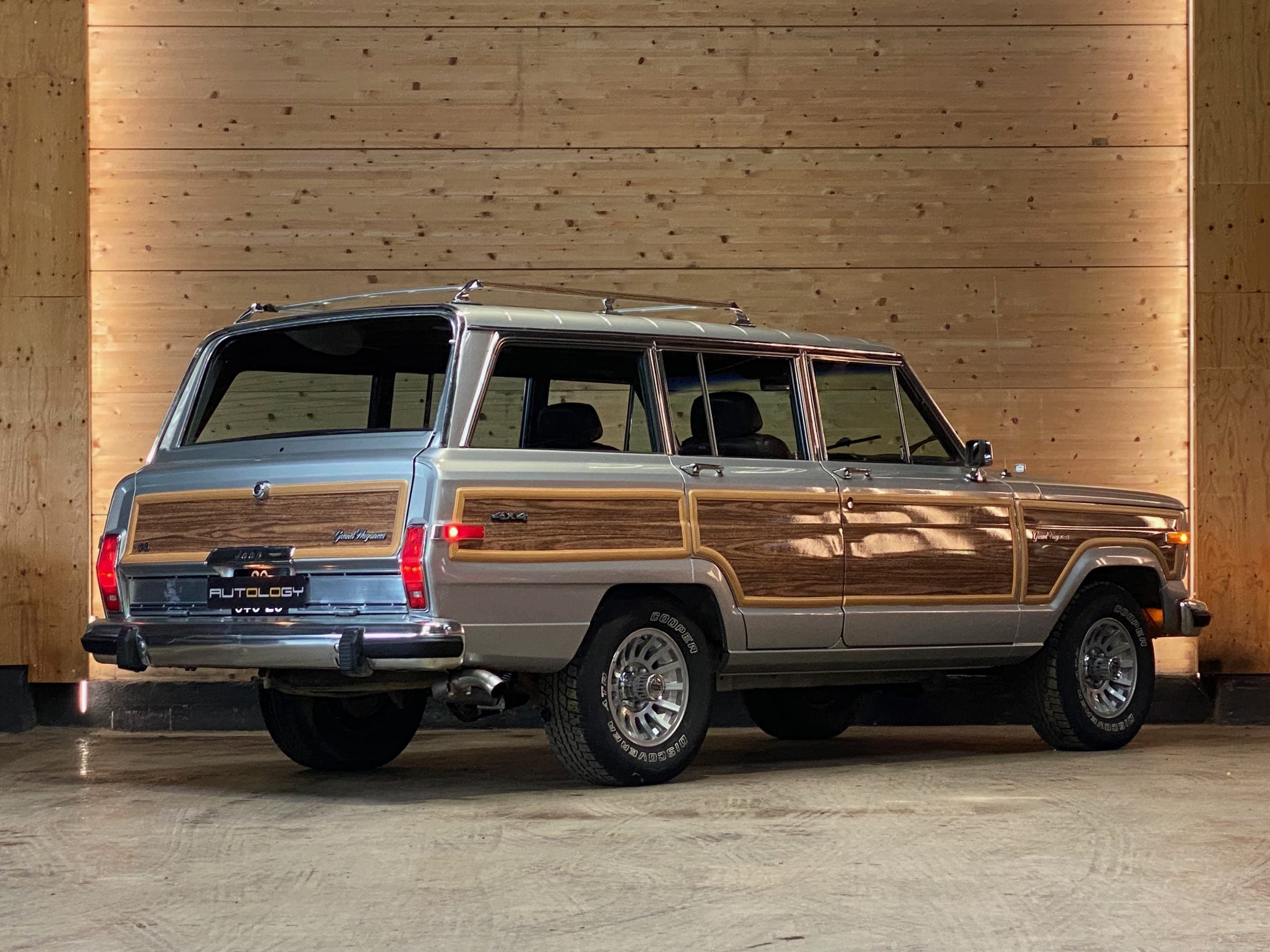









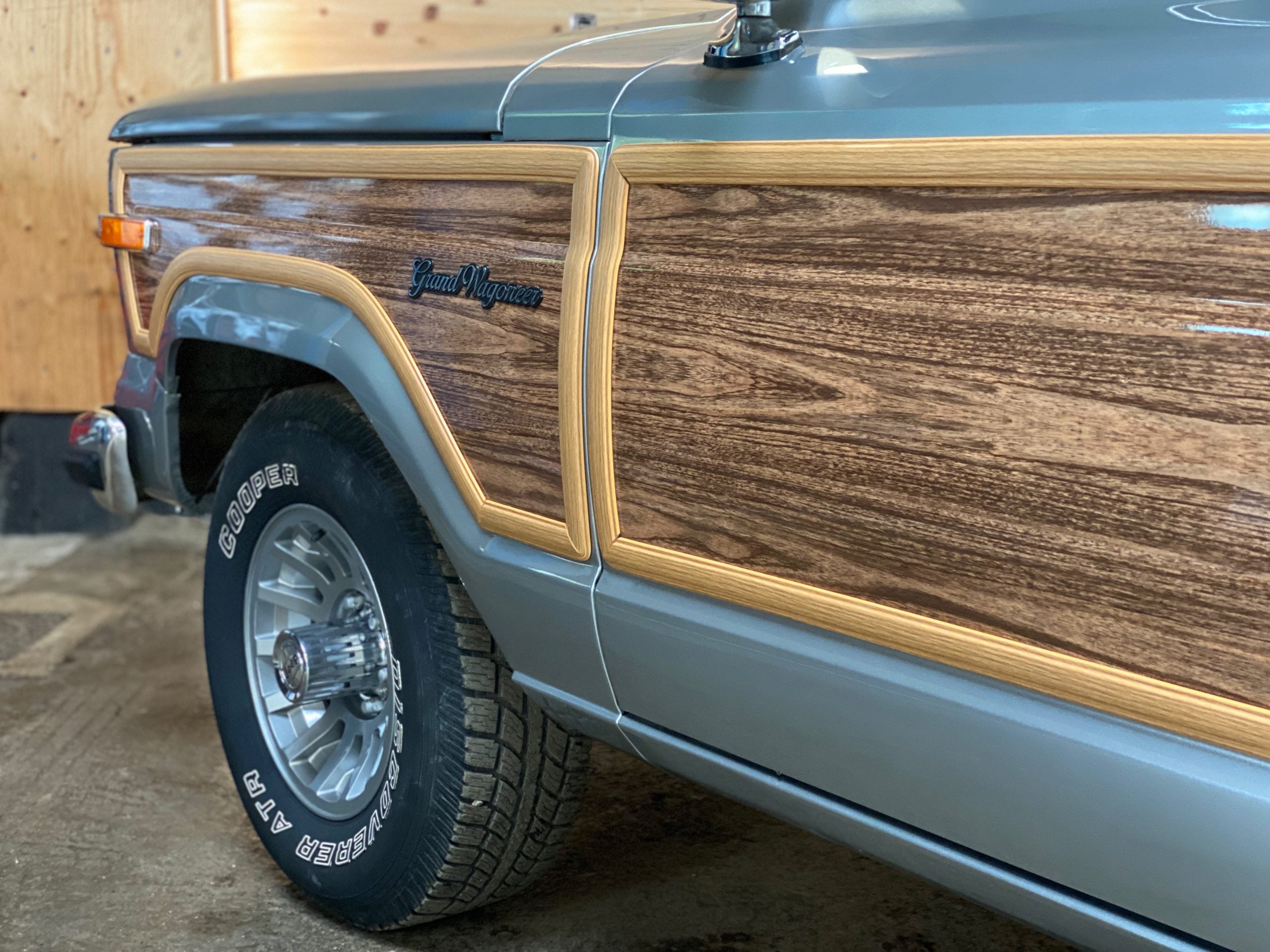











JEEP GRAND WAGONEER “FINAL EDITION”
1991 / 179 000 km

Specifications
Jeep
Grand Wagoneer (SJ)
1991
34.0
5.9
Traction
Non
179000
red leather/fabric
light gray metal
Essence
Automatique
Historique
Few vehicles can boast of having revolutionized (or even invented) a segment. And few vehicles can boast of having had a career so long that they were produced by three different companies. The Jeep Wagoneer, it can!
Automatic transmission, air conditioning, electric windows… all of this is quite normal in an SUV today. However, it was not in 1963. At the time, a utility vehicle was a truck. That is to say, rustic! The axles are rigid, the comfort elements are non-existent and the road capabilities are of no importance. The Wagoneer will come to shake up these preconceived ideas and thus create a new segment, the recreational vehicle. That is to say, a vehicle capable of meeting utilitarian requirements, while taking care of its passengers. And all this, with an inimitable look!
During the 1950s, the four-wheel drive market was still a niche, but it was largely dominated by Jeep. The introduction of the International Scout in 1961 shook things up a bit. It was more modern than Jeep products and even had some vague road-going capabilities. For Kaiser-Jeep executives (Willys, the original designer of the Jeep, had been bought by Kaiser Motors in 1953), this was a wake-up call.
Thanks to excellent integration of the all-wheel drive components into the chassis, the engineers managed to create a lower vehicle while maintaining very good ground clearance. This allows better access on board and improves road holding. Road holding is further improved by the optional availability of an independent front axle (using torsion bars instead of leaf springs). The Wagoneer is also the first 4-wheel drive vehicle to offer an automatic transmission (3-speed, supplied by Borg-Warner), an essential accessory to appeal to families. As for the design, the Wagoneer is somewhere between a 4x4 and a family sedan thanks to its smooth sides, large glass surfaces and imposing grille while maintaining solid proportions. It looks impressive, but in fact it is only 4.66 meters long. While the Wagoneer would undergo several styling changes over the course of its long career (1963 – 1991), virtually none of its sheet metal panels would be modified. Nice design!
The Wagoneer thus began its career on November 14, 1962 (1963 vintage) and was a great success. Each year, between 15,000 and 20,000 units were produced. In 1984, Jeep presented its new XJ generation Cherokee (produced until 2001). With them came a posh version called… Wagoneer. Thus, the original Wagoneer became the Grand Wagoneer. The main change was the installation of new taillights, a first since 1963, coming from the old Cherokee. Despite the arrival of its more modern cousin, the Grand Wagoneer continued to sell well: 20,019 units in 1984, 17,814 in 1985, 17,254 in 1986 and 14,265 in 1987. For 1985, the Selec-Trac 4WD system was improved and a limited-slip differential was available starting in 1986. A new 3-section grille was installed in 1986 and new wheels were offered starting in 1987. In March 1987, Chrysler acquired AMC. Several models were quickly discontinued, but even though it had been in production for 25 years, not the Grand Wagoneer. Despite its more limited production, it still generated large margins. From there, Chrysler will simply refine the finish and install Mopar parts (roof console or air conditioning compressor for example). Sales are still stable for a while (14,177 units in 1988) then begin to fall (10,159 units in 1989 and 6,449 in 1990). The last Grand Wagoneer leaves the assembly line on June 21, 1991 after only 1,560 units for the 1991 model year.
During this last year of production, these 1,560 copies will logically bear the name of "Final Edition", we are proud to offer one of them.
The fact is that in 1991, the Jeep Grand Wagoneer was still equipped with a 5.9l carbureted V8 dating back to the 1970s. So even 30 years ago, it was "old". Consequently, the Grand Wagoneer drives exactly as you would expect. It holds a steady cruising speed of 70-75 mph on the highway, but anywhere else, it doesn't like to be rushed. Better to drive slowly and let people admire its iconic, timeless style.
But even though the Grand Wagoneer may seem “old school,” it was an innovator and an icon. Predating the Range Rover by nearly a decade, the Grand Wagoneer was the first luxury SUV, and its enduring style helped it become a status symbol for America’s upper class. Even today, a Grand Wagoneer still looks right at home in the home. I, for one, love it!
We have taken great care to perfectly restore this automotive icon, so that even daily use is entirely possible.
- May 1991: Delivery of the new vehicle to Canada
- October 9, 2002: Change of ownership
- September 13, 2006: Change of ownership
- Year 2022: Bodywork restoration. Complete disassembly of the vehicle, bodywork treatment, painting of the exterior and interior of the vehicle, replacement of all bodywork seals, replacement of the Woody kit, rim repair, replacement of all optics, replacement of the tank protection sheet, replacement of the headliner
- Year 2023: Mechanical restoration. Replacement of the front and rear brakes, replacement of the exhaust, installation of an Edelbrock Performer intake manifold, installation of a Holley Street Warrior carburetor, installation of an Edelbrock Max-fire distributor, installation of an MSD Blaster ignition coil, installation of a Summit chrome air filter, engine-gearbox and axles oil change, replacement of the rocker covers, recommissioning of the air conditioning, replacement of the belts, replacement of the car radio
Few vehicles can boast of having revolutionized (or even invented) a segment. And few vehicles can boast of having had a career so long that they were produced by three different companies. The Jeep Wagoneer, it can!
Automatic transmission, air conditioning, electric windows… all of this is quite normal in an SUV today. However, it was not in 1963. At the time, a utility vehicle was a truck. That is to say, rustic! The axles are rigid, the comfort elements are non-existent and the road capabilities are of no importance. The Wagoneer will come to shake up these preconceived ideas and thus create a new segment, the recreational vehicle. That is to say, a vehicle capable of meeting utilitarian requirements, while taking care of its passengers. And all this, with an inimitable look!
During the 1950s, the four-wheel drive market was still a niche, but it was largely dominated by Jeep. The introduction of the International Scout in 1961 shook things up a bit. It was more modern than Jeep products and even had some vague road-going capabilities. For Kaiser-Jeep executives (Willys, the original designer of the Jeep, had been bought by Kaiser Motors in 1953), this was a wake-up call.
Thanks to excellent integration of the all-wheel drive components into the chassis, the engineers managed to create a lower vehicle while maintaining very good ground clearance. This allows better access on board and improves road holding. Road holding is further improved by the optional availability of an independent front axle (using torsion bars instead of leaf springs). The Wagoneer is also the first 4-wheel drive vehicle to offer an automatic transmission (3-speed, supplied by Borg-Warner), an essential accessory to appeal to families. As for the design, the Wagoneer is somewhere between a 4x4 and a family sedan thanks to its smooth sides, large glass surfaces and imposing grille while maintaining solid proportions. It looks impressive, but in fact it is only 4.66 meters long. While the Wagoneer would undergo several styling changes over the course of its long career (1963 – 1991), virtually none of its sheet metal panels would be modified. Nice design!
The Wagoneer thus began its career on November 14, 1962 (1963 vintage) and was a great success. Each year, between 15,000 and 20,000 units were produced. In 1984, Jeep presented its new XJ generation Cherokee (produced until 2001). With them came a posh version called… Wagoneer. Thus, the original Wagoneer became the Grand Wagoneer. The main change was the installation of new taillights, a first since 1963, coming from the old Cherokee. Despite the arrival of its more modern cousin, the Grand Wagoneer continued to sell well: 20,019 units in 1984, 17,814 in 1985, 17,254 in 1986 and 14,265 in 1987. For 1985, the Selec-Trac 4WD system was improved and a limited-slip differential was available starting in 1986. A new 3-section grille was installed in 1986 and new wheels were offered starting in 1987. In March 1987, Chrysler acquired AMC. Several models were quickly discontinued, but even though it had been in production for 25 years, not the Grand Wagoneer. Despite its more limited production, it still generated large margins. From there, Chrysler will simply refine the finish and install Mopar parts (roof console or air conditioning compressor for example). Sales are still stable for a while (14,177 units in 1988) then begin to fall (10,159 units in 1989 and 6,449 in 1990). The last Grand Wagoneer leaves the assembly line on June 21, 1991 after only 1,560 units for the 1991 model year.
During this last year of production, these 1,560 copies will logically bear the name of "Final Edition", we are proud to offer one of them.
The fact is that in 1991, the Jeep Grand Wagoneer was still equipped with a 5.9l carbureted V8 dating back to the 1970s. So even 30 years ago, it was "old". Consequently, the Grand Wagoneer drives exactly as you would expect. It holds a steady cruising speed of 70-75 mph on the highway, but anywhere else, it doesn't like to be rushed. Better to drive slowly and let people admire its iconic, timeless style.
But even though the Grand Wagoneer may seem “old school,” it was an innovator and an icon. Predating the Range Rover by nearly a decade, the Grand Wagoneer was the first luxury SUV, and its enduring style helped it become a status symbol for America’s upper class. Even today, a Grand Wagoneer still looks right at home in the home. I, for one, love it!
We have taken great care to perfectly restore this automotive icon, so that even daily use is entirely possible.
- May 1991: Delivery of the new vehicle to Canada
- October 9, 2002: Change of ownership
- September 13, 2006: Change of ownership
- Year 2022: Bodywork restoration. Complete disassembly of the vehicle, bodywork treatment, painting of the exterior and interior of the vehicle, replacement of all bodywork seals, replacement of the Woody kit, rim repair, replacement of all optics, replacement of the tank protection sheet, replacement of the headliner
- Year 2023: Mechanical restoration. Replacement of the front and rear brakes, replacement of the exhaust, installation of an Edelbrock Performer intake manifold, installation of a Holley Street Warrior carburetor, installation of an Edelbrock Max-fire distributor, installation of an MSD Blaster ignition coil, installation of a Summit chrome air filter, engine-gearbox and axles oil change, replacement of the rocker covers, recommissioning of the air conditioning, replacement of the belts, replacement of the car radio